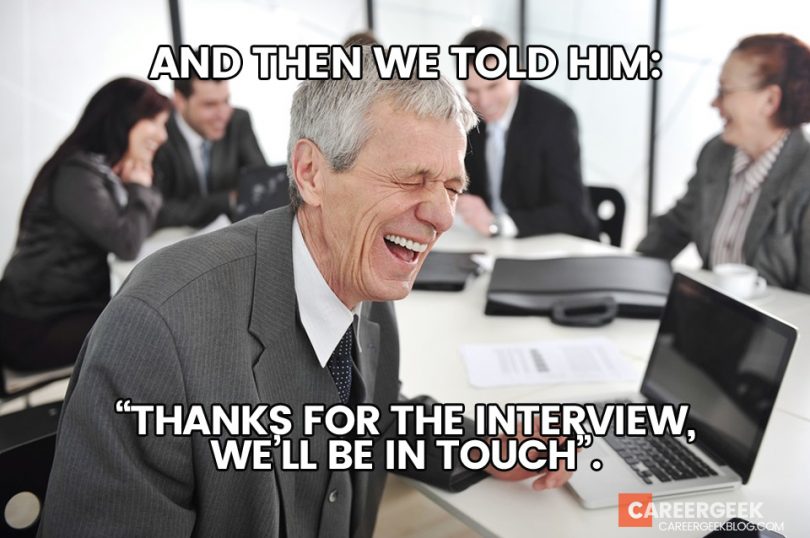My first engineering hire was a disaster. On paper, he was perfect, but in reality, he was secretly moonlighting at another job. He was never responsive, barely shipped anything, and the experience taught me a hard lesson: how you hire is just as important as who you hire.
As a founder, you should always be recruiting. It’s one of the most important things you’ll ever do to build your team. And when it comes to your tech, hiring the right software engineers is everything. It’s the difference between a product that flies and one that never gets off the ground.
Over the years, I’ve made my share of hiring mistakes. I’ve hired too fast, too slow, and for the wrong reasons. But through it all, we’ve developed a process that works. It’s not about tricks or “gotcha” questions. It’s about finding great people who believe in what you’re building.
This is our simple, no-nonsense guide to hiring software engineers.
Step 1: Before You Write a Single Job Post, Know Who You’re Looking For
This sounds obvious, but it’s where most companies go wrong. Don’t just copy and paste a generic “Software Engineer” job description. Sit down with your team and get specific.
- What problem will this person solve? Are you building a new feature? Fixing a mountain of bugs? Scaling your infrastructure? The answer changes the type of person you need.
- What are the must-have skills? Be realistic. Does a front-end developer really need to know how to configure a Kubernetes cluster? Probably not. List the absolute essentials for the job, not a wish list of every technology under the sun.
- What does success look like in 6 months? If you can’t answer this, you’re not ready to hire. Having clear goals will help you evaluate candidates and set your new hire up for a win.
Step 2: Write a Job Description That Doesn’t Suck
Your job description is a sales pitch. It’s your first chance to convince someone amazing to come work with you. Don’t waste it with corporate jargon.
- Lead with the mission. Why does your company exist? What are you trying to change? Engineers want to build things that matter.
- Talk about the problems they’ll solve. Instead of a boring list of responsibilities, describe the interesting challenges they’ll get to tackle. “You’ll help us scale our real-time data pipeline to handle millions of events per second” is a lot more exciting than “Maintain and improve backend services.”
- Be honest about your tech stack. List your main languages and tools, but don’t make it a rigid checklist. Great engineers can learn new technologies.
- Show your personality. Are you a fun, informal team? Let that come through. Your job post should feel like it was written by a human.
Step 3: Go Where the Great Engineers Are
Posting a job and praying isn’t a strategy. You have to actively look for the right people in the right places.
- Start with your team. Your best source for great candidates is often your own team. Good people know other good people. Create a simple referral program and make it a priority.
- Engage with online communities. Go where developers hang out. This could be X, specific subreddits, niche Slack or Discord communities, or Stack Overflow. Don’t just spam your job link; participate in discussions and build relationships.
- Look for contributors. Some of the best engineers are actively building in public. Look for people contributing to open-source projects you admire or who have interesting personal projects on GitHub. A thoughtful, personalized message to someone like this is worth a hundred generic LinkedIn requests.
- Tap your network. Don’t forget the obvious. Let your investors, advisors, and other founders know you’re hiring. A warm introduction is incredibly valuable.
- Partner with a specialized recruiter. A good tech recruiter who understands your space can be a powerful ally, especially when you’re scaling quickly. They have established networks and can bring you vetted candidates you wouldn’t find otherwise. Just make sure they truly understand your culture.
Step 4: The Interview Process: Keep it Human
The goal of the interview is to see if someone can do the job, not to make them feel stupid. Our process is designed to give candidates the best possible chance to show us their skills.
- The Phone Screen (30 minutes): This is a quick chat to see if there’s a mutual interest. I usually handle this myself. I talk about our vision, ask about their favorite projects, and see if the conversation flows. It’s more about vibe than technical skills at this stage.
- The Collaborative Coding Session (60 minutes): We pair the candidate with one of our engineers to work through a practical problem together in a shared editor. This isn’t a test where we watch them sweat. It’s a pair-programming exercise that mirrors how our team actually works.
Why a collaborative session? We want to see how a candidate thinks, communicates, and collaborates. How do they break down a problem? How do they talk through their ideas? How do they respond to feedback and suggestions? This gives us a much better signal on their technical and teamwork skills than a high-pressure solo performance.
- The Culture Fit Call (45 minutes): This is the final conversation, and it’s all about making sure there’s a mutual fit. This isn’t another technical grilling, it’s a chance to see how we’d work together. The candidate meets with me (the founder) and one or two key team members. Each person on our side has a goal: to see if the candidate exhibits our core values in the way they think and communicate. We want to know what drives them. Are they curious? Humble? Do they take ownership? Most importantly, we give them plenty of time to ask us the tough questions.
We don’t ask brain teasers or “how many golf balls fit in a 747” questions. They’re a waste of time.
Step 5: Making the Offer
Before you extend a formal offer, do your homework. This is the time for reference checks. Don’t treat this as a formality; it’s your last chance to catch any red flags. Ask to speak with former managers and listen for what’s said and what isn’t.
Once the references check out and you’re confident, move fast. If you’ve found the right person, don’t wait. A great candidate will have other offers. Call them, tell them you’re excited to offer them the job, and then follow up immediately with a written offer letter.
Be prepared to talk about more than just salary. Talk about the impact they’ll have, the ownership they’ll get, and the opportunity to grow with the company.
Step 6: Onboarding is Everything
The hiring process doesn’t end when they sign the offer. The first few weeks are critical. Have a plan.
- Day 1: Have their laptop, accounts, and a welcome kit ready. Take them to lunch. Make them feel like part of the team from the very first minute.
- Week 1: Assign them a “buddy” to help them navigate the codebase and company culture. Give them a small, meaningful task to complete so they can get an early win.
- First 90 Days: Set clear goals and check in regularly. Make sure they have everything they need to be successful.
A Quick Word on Common Mistakes
I’ve learned most of this the hard way. Here are a few traps to avoid:
- Over-valuing Big Tech Experience: A resume from a big-name company is impressive, but the skills that lead to success there often don’t translate to an early-stage startup. At a big company, you learn to navigate bureaucracy and work on a tiny piece of a huge product. At a startup, you need people who are adaptable, scrappy, and thrive on ambiguity.
- Lacking Structure for Success: Even the best engineers will struggle without the right foundation. Make sure you have proper software development process like Agile and a clear vision of your product and what you want to build. Great talent needs good structure to thrive.
- The Slow “No”: If a candidate isn’t a fit, tell them quickly and respectfully. Dragging out the process is bad for your reputation and wastes everyone’s time. The best talent is off the market in days, not weeks.
- Hiring for Skills, Ignoring People: The most skilled engineer in the world can be toxic to your team. A brilliant jerk will do more harm than good. Always ask yourself: “Would I want to work with this person every day?”
- Outsourcing Your Culture: Don’t let a recruiter be the sole judge of who fits your team. You, as the founder, and your core team need to be deeply involved. You are the guardian of your company’s culture.

Final Thoughts
Hiring is hard, but it’s not complicated. I believe that learning how to recruit and hire great software engineers is a fundamental skill every founder must develop. It’s about treating people with respect, being clear about what you need, and selling your vision. If you focus on the human side of things, you’ll not only find great engineers, you’ll build a company where people love to work.








